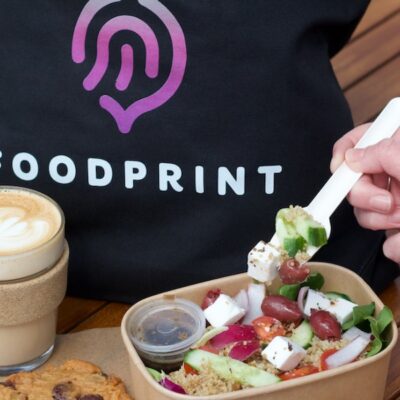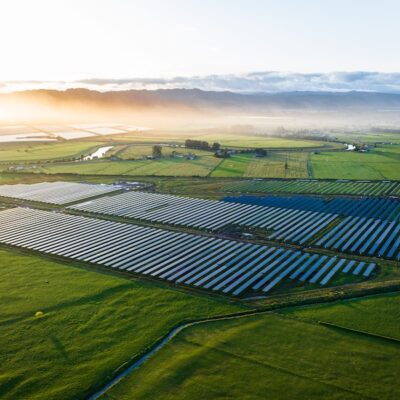Is your wardrobe killing the planet?
Clothing is one of the fastest growing causes of waste in New Zealand. However, a number of businesses in the fashion and textile sector are working hard to turn that […]
Clothing is one of the fastest growing causes of waste in New Zealand. However, a number of businesses in the fashion and textile sector are working hard to turn that around, writes Phil Crawford.
Your jeans may look innocent but they’ve been involved in numerous crimes of fashion long before you fell in love with them. And, they haven’t stopped. While your bootcuts may be guilty, along with just about every other piece of clothing you own.
But redemption is possible.
The evidence against your wardrobe is compelling. You don’t need to be a forensic scientist to see the giant environmental footprint created by the fashion industry. For starters it is the second-largest consumer of water worldwide and produces about 20% of global waste water. And, that’s often polluted.
Remember those expensive looking jeans? It took about 10,000 litres of water to grow the cotton to make them. That’s more water than the average person drinks in 10 years! That high water use has come at a price. For example, cotton farming in central Asia has used up so much water from the Aral Sea – one of the world’s four largest lakes – that it is now little more than desert and a few small ponds. Meanwhile, washing clothes releases 500,000 tons of microfibres into the ocean each year — the equivalent of 50 billion plastic bottles.
The fashion industry is also one of the largest contributors to global warming, boasting greenhouse gas emissions that exceed both aviation and shipping.
So, by the time you bought those jeans, they already had a long rap sheet of environmental crimes. However, it’s what happens when you no longer want them, that’s the real kicker. That’s because most clothing is thrown away. It’s estimated that up to 87% of textiles go into landfill, or are incinerated, when most of those materials could be reused. Every second, the equivalent of one rubbish truck of textiles is landfilled or burned. That’s enough to fill the Sydney harbour in just 365 days. Not just once, but repeatedly.
Change is underway
While clothing is one of the fastest growing causes of waste in New Zealand there are a number of organisations in the fashion and textile sector working hard to turn that around. We’ll come to them shortly.
Back at the start we talked about redemption but there are few other ‘R’ words that are important to this story. In a circular economy, products are designed to last longer and are reused, repaired, re-purposed or recycled when they’re worn out, or no longer needed. That’s often described as ‘make, use, return’ and it requires a different way of thinking compared to the current linear model of ‘take, make waste’.
If we’re talking about circular economy models then we have to bring in product stewardship. In simple terms it’s all about businesses taking responsibility for the products they make and sell, from design to end of life, so they’re not ending up in landfill. Earlier this year SBN launched a website dedicated to product stewardship.
It profiles organisations across 10 sectors that have introduced product stewardship into the way they do business. Interestingly the clothing and textiles category appears to be the most popular, based on visitor numbers.
Leading the way
Wellington-based textile research and development company, The Formary, has been developing circular solutions for over a decade. It is focused on creating the system change needed to reduce textile waste through reuse. In 2016 it initiated a cross industry collaboration to radically reduce the environmental impacts of textiles and clothing in New Zealand. As a result, the Usedfully® Textile Reuse Programme was launched two years ago.
“There is a natural limit to what companies can achieve on their own – collaboration and inclusion are the most effective and efficient ways to solve these challenges,” says Brian Johnston, Sustainability Specialist at The Formary.
Programme members, which range from large corporations through to boutique brands, can register their garments on the Usedfully Textile Management System to track material flows from retail/sale through to end of use. The system generates metrics on volumes, fibre types and the associated environmental and financial impacts. This information, currently missing from supply chains, helps to improve resource management.
Registered items are then given a second life via the Usedfully Market Place which includes being resold, repaired, or reengineered and made into new garments or products.
The Formary co-founder, Bernadette Casey (pictured above), says reselling a garment is the best option. However, once an item is no longer usable or wearable there are a number of innovative ways it can be reused. For example, she says some clothing can be reprocessed to extract fibres which can be used by the roading and construction industries. Similarly, polyester fibres can be reprocessed to make new clothing or used within the plastics industry.
“We’re extracting much greater value from clothing, reducing environmental impacts and saving resources,” says Bernadette. “Through research and development, we’re adding more solutions for textile reuse all the time. Collectively, they create a low carbon clothing system that reduces the need to extract more virgin resources.”
The latest innovation within the programme is to establish a national voluntary product stewardship scheme to encourage the reuse of valuable textile resources. It is being co-designed with the clothing and textile industry and is funded by the Ministry for the Environment and programme partners.
Make.Good is also helping the clothing and the textiles sector to embrace circular economy thinking. It promotes responsible innovation, lifecycle and systems thinking, and education. It was started eight years ago by Jacinta FitzGerald (pictured below) to help organisations around the world put sustainable practices at their core.
She says it’s imperative to design products with their full life cycle in mind from the beginning. Designing products for long-term value and keeping them in use, ensuring materials are renewable and safe, and using the resources from old clothes to make new clothes, are all key to making the textile industry more sustainable.
“As a brand, ask yourself: How can what I produce be used more, and once it’s stopped being used how can it be recovered and reused?”
This month Jacinta was appointed as the first Programme Director of Mindful Fashion New Zealand. The industry collective, now in its second year, promotes long term sustainable growth through responsible business practice and industry investment.
“I’m excited about the opportunity we have with Mindful Fashion to shift the needle towards a sustainable and circular clothing and textiles industry in New Zealand. There is enormous scope for collaboration, to drive projects forward that benefit our businesses, New Zealanders, and the environment.”
Businesses walking the talk
Little Yellow Bird, has answered those questions. In 2019 it won the Supreme Award (Transforming NZ Award) at the NZI Sustainable Business Network Awards. The Wellington-based business supplies more than 400 organisations with sustainably-made uniforms and branded products. Every item of clothing is tracked from source to sale. The company sources organic rain-fed cotton and promotes its benefits, from reducing reliance on water to eliminating the need for chemical pesticides.
The Circular Store gives you the option of renting a vintage T-shirt rather than buying. Go online to find the design and size you want and then rent it on a monthly basis at an average price of about $10. Wear and wash it like it was your own. When you’re done send it back. If necessary, it will be repaired so it’s ready to be rented again. T-shirts that reach the end of life are reprocessed to keep valuable resources in use. The online store says it aims to keep all its products out of landfill.
White Label Uniforms is based in Nelson and makes custom uniforms and aprons. It adds life to its garments by encouraging customers to send them back if they need to be repaired or given a refresh with an over-dye. White Label Uniforms offers a buy back option for items that are beyond repair. That means you can return the garment in exchange for a discounted rate on your next uniform. Returned garments are taken apart and made into new products like the blankets that are used to protect your furniture when you’re moving house. If that’s not possible they are shredded and recycled into felted material or composted
Macpac has two schemes to add life and value to its products. It offers a repair service for any of its gear. If an item is beyond fixing the parts are salvaged so they can be used on other repairs. You can also return any unwanted Macpac merino item so that it can be reprocessed and used to make other products.
Yu mei makes high quality bags. It offers a repair service so that your bag can be refurbished. It also offers a buyback initiative. When you’ve finished with your bag you can return it and receive a credit towards your next purchase. Preloved bags are given a second lease of life so they can be sold again at Yu Mei’s annual archive sale.
The six businesses mentioned above are proud supporters of product stewardship. You can find out more about them, and businesses operating product stewardship initiatives in other sectors, at sbnproductstewardship.org.nz/directory.
Phil Crawford is communications advisor at the Sustainable Business Network. This article is reproduced with permission.






